SWSS PUBLISHED ARTICLES
MEDICAL JOURNAL ARTICLES
CLINICAL STUDIES
THE SPINE JOURNAL PUBLICATIONS
SYSTEM FOR REPAIRING INTER-VERTEBAL DISCS
Patent number: 6428576
Abstract: A method of repairing a defect in an annulus fibrosus of an intervertebral disc, without excising the entire nucleus pulposus of the disc with an in situ curable, bio-compatible polymerizable or polymeric material, wherein at least one of said components is a cross linkable material and at least one other of said components is a cross linking agent for said cross linkable material.
Inventor: Kevin Pauza
BIOLOGICAL BIOADHESIVE COMPOSITION AND METHODS OF PREPARATION AND USE
Patent number: 6468527
Abstract: A biologic preparation (tissue adhesive) comprising fibrinogen, thrombin and a corticosteroid agent, wherein a solution containing the corticosteroid treatment agent is used to reconstitute the thrombin from a freeze-dried state.
Inventor: Kevin Pauza
BIOLOGICAL BIOADHESIVE COMPOSITION AND METHODS OF PREPARATION AND USE
Patent Number: 6921532
Absract: A biologic preparation (tissue adhesive) for injection into a human body comprising fibrinogen, thrombin and a corticosteroid agent.
Inventor: Kevin Pauza
BIOLOGICAL BIOADHESIVE COMPOSITION AND METHODS OF PREPARATION AND USE
Patent Number: 7229633
a. A method for delivering a biological tissue adhesive for injection in a human body comprising fibrinogen, thrombin and a corticosteroid agent.
b. A method for delivering a biological tissue adhesive for injection in a human body comprising: providing a spinal needle, a dual syringe, a freeze-dried fibrinogen component, a freeze-dried thrombin component, and a betamethasone-containing solution to form a system for delivering a biological tissue adhesive.
Inventor: Kevin Pauza
BIOLOGICAL BIOADHESIVE COMPOSITION AND METHODS OF PREPARATION AND USE
Patent Number: 7235255
a. A system for delivering a biological tissue adhesive, comprising: a fibrinogen component; a thrombin component, and a corticosteroid-containing solution.
b. A system for delivering a biological tissue adhesive, comprising: a fibrinogen component; a thrombin component, and a corticosteroid-containing solution, a spinal needle; and a dual syringe.
Inventor: Kevin Pauza
INJECTION OF FIBRIN SEALANT INCLUDING AN ANESTHETIC IN SPINAL APPLICATIONS
Patent number: 7597687
Abstract: A method of treating a disc that is leaking nucleus pulposus through at least one defect in the annulus fibrosus. The method includes injecting a fibrin sealant into the disc to reduce at least a portion of the at least one defect, wherein the fibrin sealant injected into the disc comprises an anesthetic, fibrinogen and an activating compound, wherein at least a portion of the fibrin forms after injection, with the proviso that a corticosteroid is absent from the fibrin sealant injected into the disc.
Type: Grant
Filed: August 17, 2005
Issued: October 6, 2009
Assignee: Spinal Restoration, Inc.
Inventors: Kevin Pauza, Brian D. Burkinshaw, Steven I. Whitlock, Mark I. Richards, James B. Rogan
APPARATUS AND METHOD FOR DELIVERY OF BIOLOGIC SEALANT
Patent Number: 8047407
a. A device for delivery of biologic materials, comprising a cartridge having at least two cylinder bores for fluids of the biologic materials to be delivered.
b. A kit for treating a disc, comprising: fibrinogen, thrombin, and a device for delivery of biologic materials.
Inventor: Kevin Pauza
ENHANCED BIOLOGICAL AUTOLOGOUS TISSUE ADHESIVE COMPOSITION AND METHODS OF PREPARATION AND USE
Patent Number: 8124075
a. The invention includes a method for treating a disc of a patient using a tissue sealant comprising a snake venom to convert the fibrinogen to fibrin and at least one supplement.
b. Supplements include a long “laundry list” of possible additives.
Inventor: Kevin Pauza
INJECTION OF FIBRIN SEALANT USING RECONSTITUTED COMPONENTS IN SPINAL APPLICATIONS
Patent number: 8206448
Abstract: A method of treating a disc that is leaking nucleus pulposus through at least one defect in the annulus fibrosus. The method includes injecting a fibrin sealant into the disc to reduce at least a portion of the at least one defect, wherein the fibrin sealant injected into the disc comprises fibrinogen and an activating compound, wherein at least a portion of the fibrin forms after injection, wherein the fibrinogen, the activating compound or both has been reconstituted with a solution containing at least one additive, with the proviso that a corticosteroid is absent from the fibrin sealant injected into the disc.
Type: Grant
Filed: August 17, 2005
Issued: June 26, 2012
Assignee: Spinal Restoration, Inc.
Inventors: Brian D. Burkinshaw, Steven I. Whitlock, Kevin Pauza, Mark I. Richards, James B. Rogan
METHOD FOR REPAIRING INTERVERTEBRAL DISCS
Patent Number: 835714
a. A method of repairing a defect in an annulus fibrosus of an intervertebral disc, without excising the entire nucleus pulposus of the disc, comprising: inserting an introducer needle having a tip through the annulus fibrosus, injecting an in situ curable, bio-compatible polymerizable or polymeric material composition that includes a cross-linking agent into the disc.
b. The method (above) further including a very long list of drugs, biologics and other additives.
Inventor: Kevin Pauza
INJECTION OF FIBRIN SEALANT INCLUDING AN ANESTHETIC IN SPINAL APPLICATIONS
Patent number: 8394072
Abstract: A method of treating a disc that is leaking nucleus pulposus through at least one defect in the annulus fibrosus. The method includes injecting a fibrin sealant into the disc to reduce at least a portion of the at least one defect, wherein the fibrin sealant injected into the disc comprises an anesthetic, fibrinogen and an activating compound, wherein at least a portion of the fibrin forms after injection, with the proviso that a corticosteroid is absent from the fibrin sealant injected into the disc.
Type: Grant
Filed: October 5, 2009
Issued: March 12, 2013
Assignee: Spinal Restoration, Inc.
Inventors: Kevin Pauza, Brian D. Burkinshaw, Steven I. Whitlock, Mark I. Richards, James B. Rogan
INJECTION OF FIBRIN SEALANT INCLUDING AN ANESTHETIC IN SPINAL APPLICATIONS
Patent number: 8403895
Abstract: A method of treating a disc that is leaking nucleus pulposus through at least one defect in the annulus fibrosus. The method includes injecting a fibrin sealant into the disc to reduce at least a portion of the at least one defect, wherein the fibrin sealant injected into the disc comprises an anesthetic, fibrinogen and an activating compound, wherein at least a portion of the fibrin forms after injection, with the proviso that a corticosteroid is absent from the fibrin sealant injected into the disc.
Type: Grant
Filed: October 5, 2009
Issued: March 26, 2013
Assignee: Spinal Restoration, Inc.
Inventors: Kevin Pauza, Brian D. Burkinshaw, Steven I. Whitlock, Mark I. Richards, James B. Rogan
INJECTION OF FIBRIN SEALANT IN THE ABSENCE OF CORTICOSTEROIDS IN SPINAL APPLICATIONS
Patent number: 8403923
Abstract: A method and kit for treating a disc that is leaking nucleus pulposus through at least one defect in the annulus fibrosus. The method includes injecting a fibrin sealant into the disc to reduce at least a portion of the at least one defect, wherein the fibrin sealant injected into the disc comprises fibrinogen and an activating compound, wherein at least a portion of the fibrin forms after injection, with the proviso that a corticosteroid is absent from the fibrin sealant injected into the disc.
Type: Grant
Filed: August 17, 2005
Issued: March 26, 2013
Assignee: Spinal Restoration, Inc.
Inventors: Steven I. Whitlock, Brian D. Burkinshaw, Kevin Pauza
APPARATUS AND METHOD FOR INJECTION OF FIBRIN SEALANT IN SPINAL APPLICATIONS
Patent number: 8419722
Abstract: An apparatus for percutaneous delivery of a sealant comprising: at least two fluid reservoirs, an introducer needle having a distal tip that is in fluid communication with at least one reservoir, a fluid delivery tube that is in fluid communication with a second reservoir, wherein the fluid delivery tube has a tip and wherein the fluid delivery tube is configured so that the tip of the fluid delivery tube does not extend past the distal tip of the introducer needle during use.
Type: Grant
Filed: January 5, 2007
Issued: April 16, 2013
Assignee: Spinal Restoration, Inc.
Inventors: Mark Richards, Brian D. Burkinshaw, Kevin Pauza, James B. Rogan, John Wheeler
13/533,450 – INJECTION OF FIBRIN SEALANT USING RECONSTITUTED COMPONENTS IN SPINAL APPLICATION
a. A method of treating a disc comprising injecting a fibrin sealant into the disc, wherein neither the nucleus pulposus nor the annulus fibrosus has been heated…and wherein the injecting occurs by inserting an introducer needle having a tip into an intra-discal space, inserting a second needle or a polymeric catheter through the introducer needle up to but not beyond the tip of the introducer needle, and injecting the fibrinogen through the introducer needle and injecting the activating compound through the second needle or polymeric catheter, or injecting the activating compound through the introducer needle and injecting the fibrinogen through the second needle or polymeric catheter.
b. The method (above) further including a very long list of drugs, biologics and other additives.
c. A method of treating a disc comprising injecting a fibrin sealant into the disc, wherein neither the nucleus pulposus nor the annulus fibrosus has been heated…and wherein the fibrin sealant does not include a corticosteroid, and wherein normal hydrostatic pressure in the disc is restored or normal disc height is restored or both.
d. The method (above) wherein the injecting occurs by inserting an introducer needle having a tip into the nucleus pulposus, inserting a second needle having a tip into the nucleus pulposus, and injecting the fibrinogen through the introducer needle and injecting the thrombin through the second needle, or injecting the thrombin through the introducer needle and injecting the fibrinogen through the second needle.
Inventor: Kevin Pauza
11/650306 – FIBRIN SEALANT DELIVERY DEVICE INCLUDING PRESSURE MONITORING, AND METHOD AND KITS THEREOF
a. An apparatus for delivering a biocompatible sealant, comprising: at least two reservoirs for fluids to be delivered, an actuation assembly that causes the fluids to flow out of the reservoir through an exit port in the reservoir, and a pressure monitor coupled to the delivery device to measure pressure within the device.
Inventor: Kevin Pauza
INJECTION OF FIBRIN SEALANT USING RECONSTITUTED COMPONENTS IN SPINAL APPLICATIONS
Application number: 20120328600
Abstract: A method of treating a disc that is leaking nucleus pulposus through at least one defect in the annulus fibrosus. The method includes injecting a fibrin sealant into the disc to reduce at least a portion of the at least one defect, wherein the fibrin sealant injected into the disc comprises fibrinogen and an activating compound, wherein at least a portion of the fibrin forms after injection, wherein the fibrinogen, the activating compound or both has been reconstituted with a solution containing at least one additive, with the proviso that a corticosteroid is absent from the fibrin sealant injected into the disc.
Type: Application
Filed: June 26, 2012
Issued: December 27, 2012
Inventors: Brian D. Burkinshaw, Steven I. Whitlock, Kevin Pauza, Mark I. Richards, James B. Rogan
INJECTION OF FIBRIN SEALANT IN THE ABSENCE OF CORTICOSTEROIDS IN SPINAL APPLICATIONS
Application number: 20110213464
Abstract: A method and kit for treating a disc that is leaking nucleus pulposus through at least one defect in the annulus fibrosus. The method includes injecting a fibrin sealant into the disc to reduce at least a portion of the at least one defect, wherein the fibrin sealant injected into the disc comprises fibrinogen and an activating compound, wherein at least a portion of the fibrin forms after injection, with the proviso that a corticosteroid is absent from the fibrin sealant injected into the disc.
Type: Application
Filed: October 22, 2010
Issued: September 1, 2011
Inventors: Steven I. Whitlock, Brian D. Burkinshaw, Kevin Pauza, John L. Wheeler, Kevin Thorne
INJECTION OF FIBRIN SEALANT USING RECONSTITUTED COMPONENTS IN SPINAL APPLICATIONS
Application number: 20120328600
Abstract: A method of treating a disc that is leaking nucleus pulposus through at least one defect in the annulus fibrosus. The method includes injecting a fibrin sealant into the disc to reduce at least a portion of the at least one defect, wherein the fibrin sealant injected into the disc comprises fibrinogen and an activating compound, wherein at least a portion of the fibrin forms after injection, wherein the fibrinogen, the activating compound or both has been reconstituted with a solution containing at least one additive, with the proviso that a corticosteroid is absent from the fibrin sealant injected into the disc.
Type: Application
Filed: June 26, 2012
INJECTION OF FIBRIN SEALANT INCLUDING AN ANESTHETIC IN SPINAL APPLICATIONS
Application number: 20100233148
Abstract: A method of treating a disc that is leaking nucleus pulposus through at least one defect in the annulus fibrosus. The method includes injecting a fibrin sealant into the disc to reduce at least a portion of the at least one defect, wherein the fibrin sealant injected into the disc comprises an anesthetic, fibrinogen and an activating compound, wherein at least a portion of the fibrin forms after injection, with the proviso that a corticosteroid is absent from the fibrin sealant injected into the disc.
Type: Application
Filed: October 5, 2009
Issued: September 16, 2010
Inventors: Kevin Pauza, Brian D. Burkinshaw, Steven I. Whitlock, Mark I. Richards, James B. Rogan
INJECTION OF FIBRIN SEALANT INCLUDING AN ANESTHETIC IN SPINAL APPLICATIONS
Application number: 20100143327
Abstract: A method of treating a disc that is leaking nucleus pulposus through at least one defect in the annulus fibrosus. The method includes injecting a fibrin sealant into the disc to reduce at least a portion of the at least one defect, wherein the fibrin sealant injected into the disc comprises an anesthetic, fibrinogen and an activating compound, wherein at least a portion of the fibrin forms after injection, with the proviso that a corticosteroid is absent from the fibrin sealant injected into the disc.
Type: Application
Filed: October 5, 2009
Issued: June 10, 2010
Inventors: Kevin Pauza, Brian D. Burkinshaw, Steven I. Whitlick, Mark I. Richards, James B. Rogan
INJECTION OF FIBRIN SEALANT INCLUDING AN ANESTHETIC IN SPINAL APPLICATIONS
Application number: 20100137816
Abstract: A method of treating a disc that is leaking nucleus pulposus through at least one defect in the annulus fibrosus. The method includes injecting a fibrin sealant into the disc to reduce at least a portion of the at least one defect, wherein the fibrin sealant injected into the disc comprises an anesthetic, fibrinogen and an activating compound, wherein at least a portion of the fibrin forms after injection, with the proviso that a corticosteroid is absent from the fibrin sealant injected into the disc.
Type: Application
Filed: October 5, 2009
Issued: June 3, 2010
Inventors: Kevin Pauza, Brian D. Burkinshaw, Steven I. Whitlock, Mark I. Richards, James B. Rogan
METHOD FOR TREATING HERNIATED DISCS
Application number: 20080294261
Abstract: A method is effective for treating herniated discs. The method includes (a) surgically remove a herniated portion of disc annulus from a herniated disc, or surgically depressing and holding a herniated portion of disc annulus within original boundaries of the herniated disc, and (b) re-enforcing the surgically treated disc with an effective amount of a biocompatible degradable polymeric compound, such as a fibrin sealant.
Type: Application
Filed: May 24, 2007
Issued: November 27, 2008
Inventors: Kevin Pauza, Brian Burkinshaw, James Rogan
FIBRIN SEALANT DELIVERY DEVICE INCLUDING PRESSURE MONITORING, AND METHOD AND KITS THEREOF
Application number: 20070213660
Abstract: Apparatus for delivering biologic sealant device that includes a pressure monitor coupled to the delivery device to measure pressure within the device. A method of treating a disc using the device as well as a kit including the device is described.
Type: Application
Filed: January 5, 2007
Issued: September 13, 2007
Inventors: Mark Richards, Brian Burkinshaw, Kevin Pauza, James Rogan
APPARATUS AND METHOD FOR INJECTION OF FIBRIN SEALANT IN SPINAL APPLICATIONS
Application number: 20070191781
Abstract: An apparatus for percutaneous delivery of a sealant comprising: at least two fluid reservoirs, an introducer needle having a distal tip that is in fluid communication with at least one reservoir, a fluid delivery tube that is in fluid communication with a second reservoir, wherein the fluid delivery tube has a tip and wherein the fluid delivery tube is configured so that the tip of the fluid delivery tube does not extend past the distal tip of the introducer needle during use.
Type: Application
Filed: January 5, 2007
Issued: August 16, 2007
Inventors: Mark Richards, Brian Burkinshaw, Kevin Pauza, James Rogan, John Wheeler
INJECTION OF FIBRIN SEALANT IN THE ABSENCE OF CORTICOSTEROIDS IN SPINAL APPLICATIONS
Application number: 20060106364
Abstract: A method and kit for treating a disc that is leaking nucleus pulposus through at least one defect in the annulus fibrosus. The method includes injecting a fibrin sealant into the disc to reduce at least a portion of the at least one defect, wherein the fibrin sealant injected into the disc comprises fibrinogen and an activating compound, wherein at least a portion of the fibrin forms after injection, with the proviso that a corticosteroid is absent from the fibrin sealant injected into the disc.
Type: Application
Filed: August 17, 2005
Issued: May 18, 2006
Inventors: Steven Whitlock, Brian Burkinshaw, Kevin Pauza
INJECTION OF FIBRIN SEALANT INCLUDING AN ANESTHETIC IN SPINAL APPLICATIONS
Application number: 20060095016
Abstract: A method of treating a disc that is leaking nucleus pulposus through at least one defect in the annulus fibrosus. The method includes injecting a fibrin sealant into the disc to reduce at least a portion of the at least one defect, wherein the fibrin sealant injected into the disc comprises an anesthetic, fibrinogen and an activating compound, wherein at least a portion of the fibrin forms after injection, with the proviso that a corticosteroid is absent from the fibrin sealant injected into the disc.
Type: Application
Filed: August 17, 2005
Issued: May 4, 2006
Inventors: Kevin Pauza, Brian Burkinshaw, Steven Whitlock, Mark Richards, James Rogan
INJECTION OF FIBRIN SEALANT USING RECONSTITUTED COMPONENTS IN SPINAL APPLICATIONS
Application number: 20060095075
Abstract: A method of treating a disc that is leaking nucleus pulposus through at least one defect in the annulus fibrosus. The method includes injecting a fibrin sealant into the disc to reduce at least a portion of the at least one defect, wherein the fibrin sealant injected into the disc comprises fibrinogen and an activating compound, wherein at least a portion of the fibrin forms after injection, wherein the fibrinogen, the activating compound or both has been reconstituted with a solution containing at least one additive, with the proviso that a corticosteroid is absent from the fibrin sealant injected into the disc.
Type: Application
Filed: August 17, 2005
Issued: May 4, 2006
Inventors: Brian Burkinshaw, Steven Whitlock, Kevin Pauza, Mark Richards, James Rogan
CONCENTRATED FIBRIN (DISCSEEL® PROCEDURE) STUDY SUMMARIES DISC PAIN:
- Disc pain is among the largest sources of low back pain
- No conservative or non-surgical therapy, including physical therapy, is scientifically proven to relieve disc pain
- Long term surgical success is less than 50%
DISC DEGENERATION CAUSES:
- Vertebral endplate sclerosis
- Accumulation of painful and damaging inflammatory proteins and proteolytic enzymes
- Nucleus Pulposis death
- Disc reduction in proteoglycan and water content
- Nucleus Pulposis fibrosis
CHRONIC DISC PAIN ASSOCIATES WITH:
- Accumulation of radial and concentric anulus fibrosis tears
- Vascular and painful nerve in-growth into anular tears
- Increased sensitivity to pain stimuli of exposed nerves
DISCSEEL® PROCEDURE CHARACTERISTICS:
- The Biologic flows into the disc’s tears and fissures, thus sealing them with a resorbable tissue matrix
- Concentrated fibrin (Discseel® Procedure) is uniquely formulated for disc healing
HEALING WITH CONCENTRATED FIBRIN:
- Builds a naturally conductive tissue scaffold
- Metabolically reduces inflammation
- Improves anabolic catabolic balance
- Enhanced disc healing by concentrated fibrin
PAIN RELIEF RESULTING FROM CONCENTRATED FIBRIN (DISCSEEL® PROCEDURE):
- Concentrated fibrin binds to degenerated disc tissue, sealing anular leaks
- Inhibits inflammatory cytokines and proteolytic enzymes
- Pre-programmed degradation of concentrated fibrin stimulates tissue repair via chemotaxis
- The disc tissue repair provides sustained pain relief
CONCLUSION:
- The FDA study proves concentrated fibrin heals degenerated discs
- Catalyze the natural soft tissue repair process
- The Discseel® Procedure is a non-surgical, percutaneous procedure
- Unlike fusions or artificial discs, the Discseel® Procedure does not damage adjacent discs.
- FDA NASS Outstanding Study of the Year supports concentrated fibrin used in the Discseel® Procedure beneficial physical and metabolic modes of action












